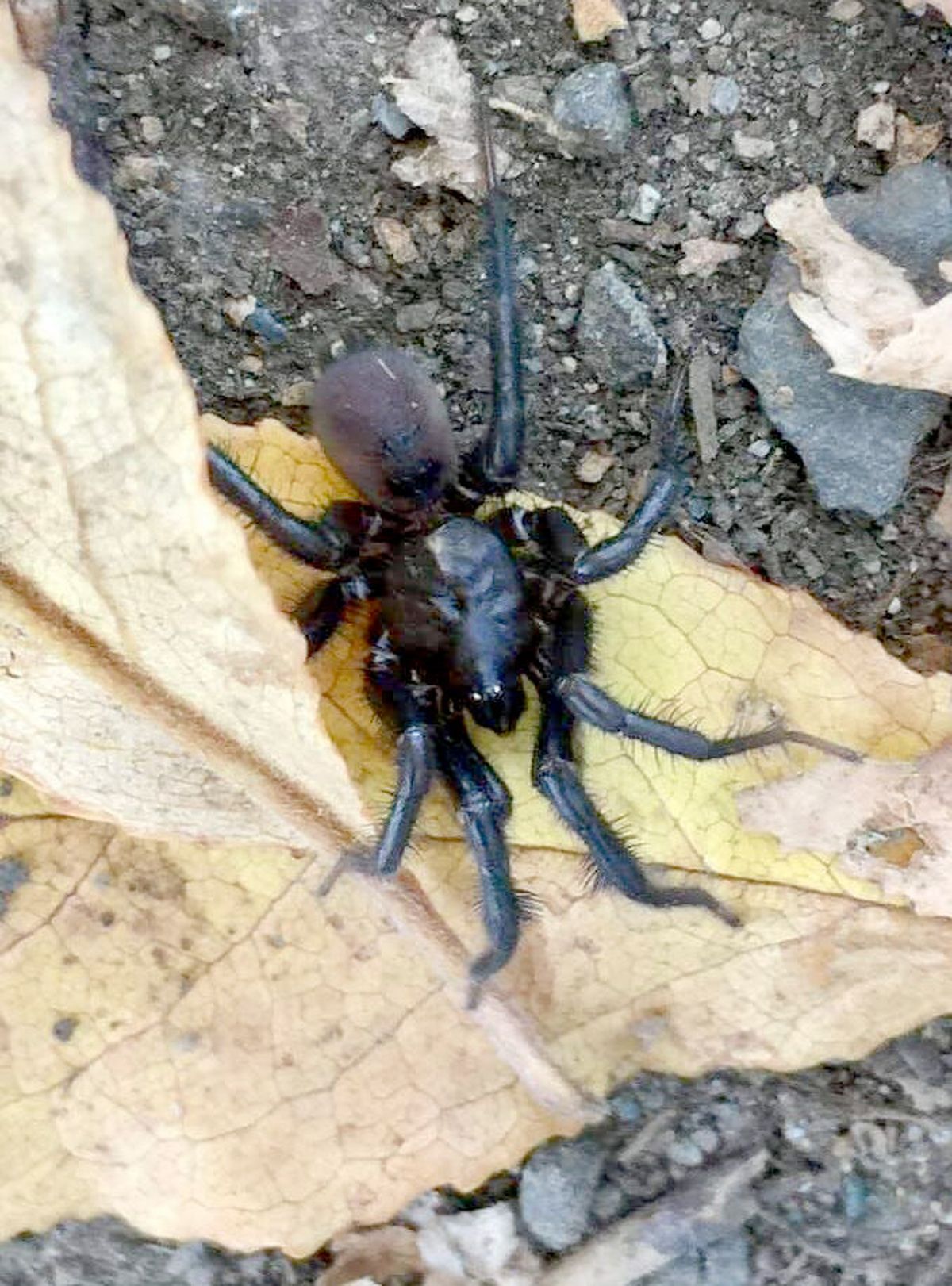Along came a spider … and it opened a door: A special arachnid is emerging in the Northwest just in time for Halloween

On crisp autumn days, as Halloween draws near, big hairy spiders scuttling across fallen leaves and withering lawns are making some Washingtonians shudder.
“I get a lot of pictures and sightings from people wanting to know what they are,” said Washington State University entomologist Richard Zack. “At this time of the year, the males are relatively common.”
With stocky black or brown bodies, impressive sharp fangs and thick legs in need of a shave, they’re called folding-door spiders, a member of the genus Antrodiaetus, which mostly inhabit parts of North America, including Washington and Idaho. Adults range in length from 1 to 2 inches. Instead of spinning webs to capture their prey, they use folding doors – hence their namesake. But more on that intriguing detail later.
“In my mind, they are the neatest spider that we have in our area,” Zack said.
Late September through October is the peak period for reports of males seen outside on the prowl, according to Spider ID, an online collective of spider enthusiasts that tracks arachnid sightings. In fact, humans could easily mistake one darting about for a spooky Halloween decorations.
“They are a very intimidating-looking spider, but I have held them in my hands and allowed others to do so and we have never had a problem,” Zack said. “They’re not aggressive.”
Should you see one scurrying about, rest assured that it’s not human flesh it’s searching for, but a female mate, he said.
The male, having lived in an underground burrow, tunnels to the surface to find a suitor in autumn. The female, who resides in her own tube-shaped burrow, rarely emerges during her lifespan – which can last as long as 15 years, said Rod Crawford, curator of arachnids at the University of Washington’s Burke Museum in Seattle.
The male, however, dies shortly after he mates. “The males that people see this time of year are spending their remaining days in search of a female. Their lives are almost over,” he said.
A folding-door spider is a master architect, enabling it to be a sit-and-wait predator that springs from its tubular-shaped home to ambush prey.
“They use their saliva and silk to line the tunnel where they live,” said Crawford, adding that they extend the silk lining to just beyond the tunnel’s entrance to create a rim. That rim, smartly camouflaged by grass, twigs and other debris, opens and closes like – surprise! – a folding door.
“When the spider senses vibrations near the burrow’s entrance, it springs out the door, grabs the prey and pulls it back inside,” he explained. “All of this happens in an instant.”
If you see a folding-door spider creeping around in your yard, lay down your shovel and let it live, Crawford urges. After all, they want nothing to do with humans and many of the insects they feed on are considered common pests of gardens and crops.
And one more thing: Many people and websites confuse folding-door spiders for trapdoor spiders.
Although they are similar in appearance and live in burrows, not only are they different genera, but trapdoor spiders aren’t known to live in the Evergreen State, Crawford said.
“We don’t have alligators in Alaska or polar bears in Florida. As long as I’ve been doing this, I haven’t received one report or photograph of a trapdoor spider in Washington,” he said. “It always turns out to be a folding-door spider.”